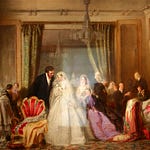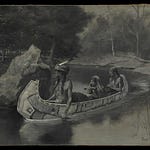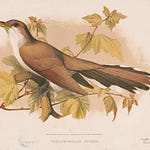When you look at a flower, what do you see? The bold red of the rose, or the soft light blue tinge of the forget-me-not; the petals, too many to count, as in the burst of the sunflower, but often you can count them. Five’s a common number, for mathematical reasons I won’t get into, except to say that it’s related to what the Greeks saw as the most beautiful of all proportions, the Golden Ratio, and they made sure to reflect that ratio in their temples and other public buildings. It’s a ratio that builds fine spirals to link the very tiny to the human scale, and the human scale to the vast and magnificent. Anyway, you can find the fives in those same forget-me-nots, and black-eyed Susans, and periwinkles, and morning glories, and many more; and you can find the spirals I’ve mentioned in pine cones and pineapples.
Did I mean to go on like that about the petals? I guess I did, because the more closely you observe the flower, the more intricate it appears, so that its tiniest features, like the hardly-visible veining on a petal, don’t appear at all like random smudges of matter, but like individual works of art in themselves, and so on all the way down and all the way in. What is more beautifully intricate and yet simple, the crab scuttling along the floor of the bay, or the Crab Nebula? I don’t claim to any certainty here, but if I had to choose one, it would be the fellow with the funny eyes.
In our two Poems of this Week, the great and justly beloved Alfred Tennyson looks upon two very different objects of nature. The first, the flower in the crannied wall, is a mystery to him. How did it get there and root itself in a little dust caught between the stones? Why does it have that shape and color? How does it live? We might venture some scientific answers to those questions, but the big question isn’t scientific. It is philosophical. What does it mean to be that flower? What is its being?
C. S. Lewis once wrote that a mere particle of matter without form is in one way closer to God than is any other creature, because it springs forth from his will, whole and entire, without any intermediate material causes. It is the least of all creatures, of course, as it has no structure, no life, no feeling, no will, no thought. But to enter into the mystery of that grain of dust, or that flower in the crannied wall, is to enter into the whole mystery of God and man. It isn’t separate from us. It is a part of the created world we dwell in, and we are creatures, too.
“Flower in the Crannied Wall”
Flower in the crannied wall, I pluck you out of the crannies, I hold you here, root and all, in my hand, Little flower—but if I could understand What you are, root and all, and all in all, I should know what God and man is.
And then there is the eagle. John the Evangelist is well represented by an eagle, for vision: the eagle was thought to be able to gaze into the sun without going blind. An eagle can see a rabbit from two miles away. If our eyes had the same proportion to our bodies as the eagle’s eyes have to his, they’d be as heavy as tennis balls. Well then, the eagle hunts from above, sometimes on a perch, from which he can see his prey below, and that includes those eagles that watch for fish swimming beneath the surface of the water. So Tennyson imagines his eagle.
He’s not asking, in this poem, what it means to be an eagle. He is showing it, and the form that he chooses is perfect for the meaning. He gives us a pair of rhyming triplets, with four beats in a line; stately, simple, majestic. Whenever you have a rhyming triplet, you should pay attention to the third line especially, because that’s when the poet may surprise you with an ironic turn, or with action, or with a climax. Tennyson is simply brilliant with poetic forms. In the first triplet, we end with the proud, certain, mighty clause, “He stands,” just the pronoun and the verb. That’s to prepare us for the second triplet, when the eagle, seeing something we do not see, acts: “He falls.” Maestro!
“The Eagle”
He clasps the crag with crooked hands; Close to the sun in lonely lands, Ring'd with the azure world, he stands. The wrinkled sea beneath him crawls; He watches from his mountain walls, And like a thunderbolt he falls.
Word & Song is an online magazine devoted to reclaiming the good, the beautiful, and the true. We publish six essays each week, on words, classic hymn, poems, films, and popular songs, as well a weekly podcast, alternately Poetry Aloud or Anthony Esolen Speaks. To support this project, please join us as a free or paid subscriber.















Share this post